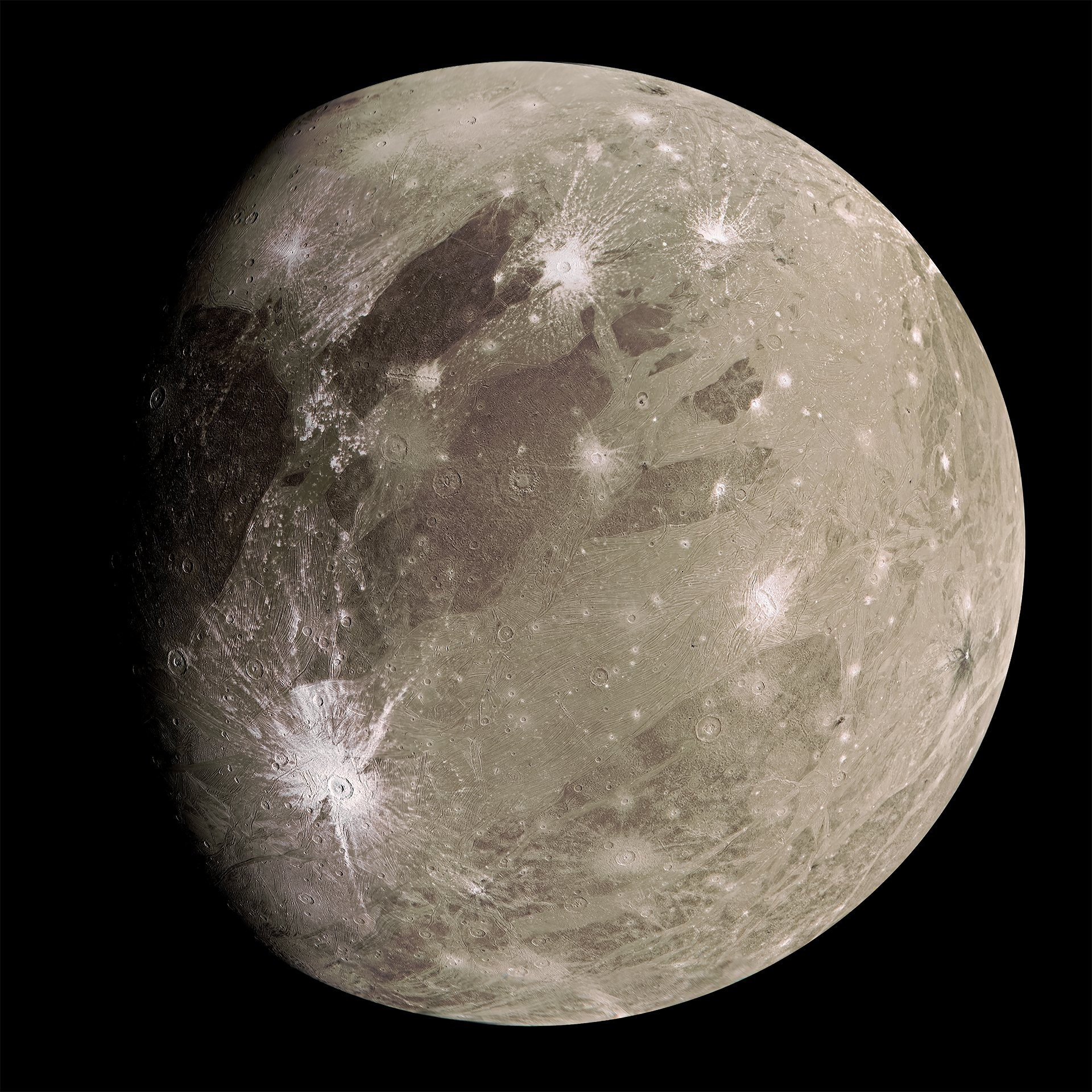This is Ganymede—the largest satellite in the Solar System.
It orbits Jupiter, it's bigger than Mercury, and it has a subsurface ocean.
The average ocean depth on Earth is 3.7 km.
The ocean within Ganymede is as much as NINE HUNDRED km deep.
It orbits Jupiter, it's bigger than Mercury, and it has a subsurface ocean.
The average ocean depth on Earth is 3.7 km.
The ocean within Ganymede is as much as NINE HUNDRED km deep.

Comments
Credit: NASA/JPL-Caltech/SwRI/MSSS/Kevin M. Gill (@kevinmgill.bsky.social)
I was aware several kinds of ice exist, but that they can all occur next to each other, naturally, due to how deep an exoplanetary ocean is, is mind-blowing.
Also is Ganymede the moon with ice geysers from tidal forces with Jupiter?
Also, Ganymede doesn't create those geysers. Europa does, though.
Point: Jupiter's moons are all interesting as hell. F our Moon, check Jupiters'.
Titan, the second-largest moon in the solar system (also larger than Mercury) and the largest moon of Saturn, is the only moon in our solar system with a thick atmosphere. Other moons have thin or nonexistent atmospheres.
But that is an order of magnitude less than for Europa; which is so heavily irradiated that it glows in the dark.
and our moon needs a cool name.
I have missing time from 1974 and through the years I have had flashbacks of that event and the message given to me by Them. They are the watchers of many planets besides Earth. They have been watching Our nuclear progress they are concerned for Our Planet & Our Future.
Dude Really, Katy Perry? 🤣🤣🤣🤣🤣🤣😆😆😆😆😆😆😆😆
The craters even look like cracks in the ice.
Even discovering diverse bacteria or multicellular life would inform on so much in the greater universe!